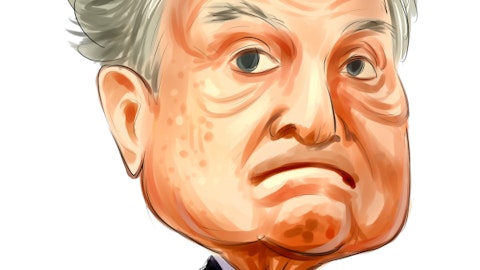Tesco Corporation (USA) (NASDAQ:TESO)‘s venture into the world’s biggest market for food and groceries has proved to be challenging as the company struggles with negative growth in China. In the company’s first quarter of 2013, ended May 25, China’s like-for-like growth, excluding petrol, declined 4.9%. The decline in growth worsened from the fourth quarter’s drop of 2%. China’s bird flu crisis and its impact on the food supply affected the business and decreased demand for pork products. A slowdown in China’s economy and lack of spending by China’s middle class also contributed to current losses. The country’s highly competitive and fragmented retail sector adds another layer of difficulty for retailers operating in China. Tesco Corporation (USA) (NASDAQ:TESO) competes with rivals such as Sun Art Retail Group, considered the Wal-Mart Stores, Inc. (NYSE:WMT) of China, which has considerable knowledge of the Chinese market, along with international expertise.
Tesco Corporation (USA) (NASDAQ:TESO) grew its business in China over the last five years, with the number of stores increasing from 56 to the current number of 131. The failure to earn a profit on their investment has prompted the company to partner with a local Chinese big-box retailer, China Resources Enterprise, or CRE. The plan is to combine Tesco Corporation (USA) (NASDAQ:TESO)’s 131 stores with CRE’s CR Vanguard stores; Tesco Corporation (USA) (NASDAQ:TESO) retains a 20% stake in the business and CRE an 80% interest. CRE has a track record of successful joint ventures and acquisitions of other companies in China that has allowed it to maintain its market share .
A profitable partnership expected
Analysts have estimated that Tesco Corporation (USA) (NASDAQ:TESO) spent about $3.1 billion in setting up its independent stores in China and made about $2 billion a year. The joint venture with CRE is expected to have combined sales of $15.7 billion, so Tesco’s 20% stake can earn the company about $3 billion annually. The smaller stake in this venture also presents an opportunity for the company to control its overseas capital expenditures .
CRE has also experienced its own challenges brought on by current market conditions, with underlying consolidated profit decreasing 9% during the first quarter. Same store sales grew 3% in the first quarter due to moderate growth in the sales of consumer goods. Growth in the retail division’s same store sales has been declining since the first half of 2011, which had a 12.9% growth in sales to its current level. However, the declining growth appears to be stabilizing. CRE has remained focused on expansion to maintain its market share, with 2013 capital expenditures budgeted at $1.1 billion; 76% of the funds will be spent between its beer and retail segments. Operating cash flows increased 38% in the first quarter, which provides resources for additional investments .
China part of Wal-Mart’s future growth
Another participant in China’s retail universe is Wal-Mart Stores, Inc. (NYSE:WMT). Wal-Mart is the second largest retailer in China, behind Sun Art Retail Group. The company considers China an area of future growth, and estimates show that the nation’s retail sales could reach $5 trillion by 2016 . The growth in sales is expected to come from China’s growing middle class and government policies that encourage domestic consumption.
This year, Wal-Mart Stores, Inc. (NYSE:WMT) expanded its online business in China by purchasing 51% of Yihaodian, an e-commerce business. Results in the second quarter were positive, with sales growing into the double digits and the site considered one of the fastest growing e-commerce businesses in China . Store upgrades to the tune of $80 million are planned for 50 of the company’s 380+ stores located in China. Over the near term, Wal-Mart Stores, Inc. (NYSE:WMT) plans to open 30 new stores in China in the next six months. Long-term plans include the opening of 100 new stores over the next three years .
My foolish conclusion
Tesco selling its Chinese stores to local retailer CRE can help the company limit additional losses and turn a quick profit. Scaling down without completely leaving the Chinese market, which has excellent growth potential and a growing middle class with money to spend, is a smart move. With a lower stake in the new joint venture Tesco should also be able to maintain greater control over its capital spending. Partnering with CRE, a local player with expertise in China’s retail sector, can provide Tesco with invaluable knowledge on how to successfully operate in this challenging market.
The article Tesco Changes its Strategy to Limit Losses in China originally appeared on Fool.com and is written by Eileen Rojas.
Eileen Rojas has no position in any stocks mentioned. The Motley Fool has no position in any of the stocks mentioned.
Copyright © 1995 – 2013 The Motley Fool, LLC. All rights reserved. The Motley Fool has a disclosure policy.





